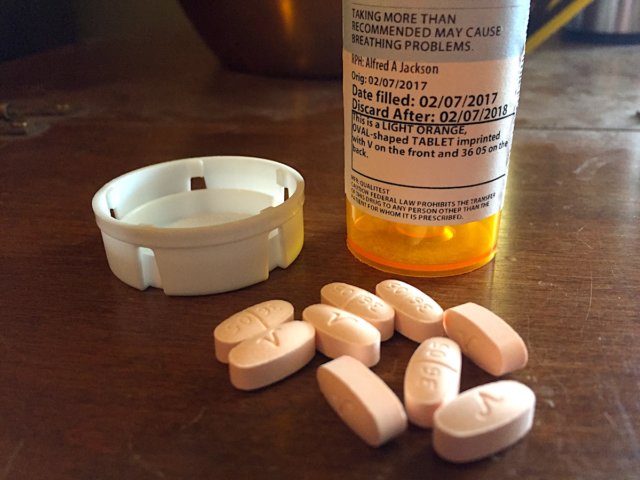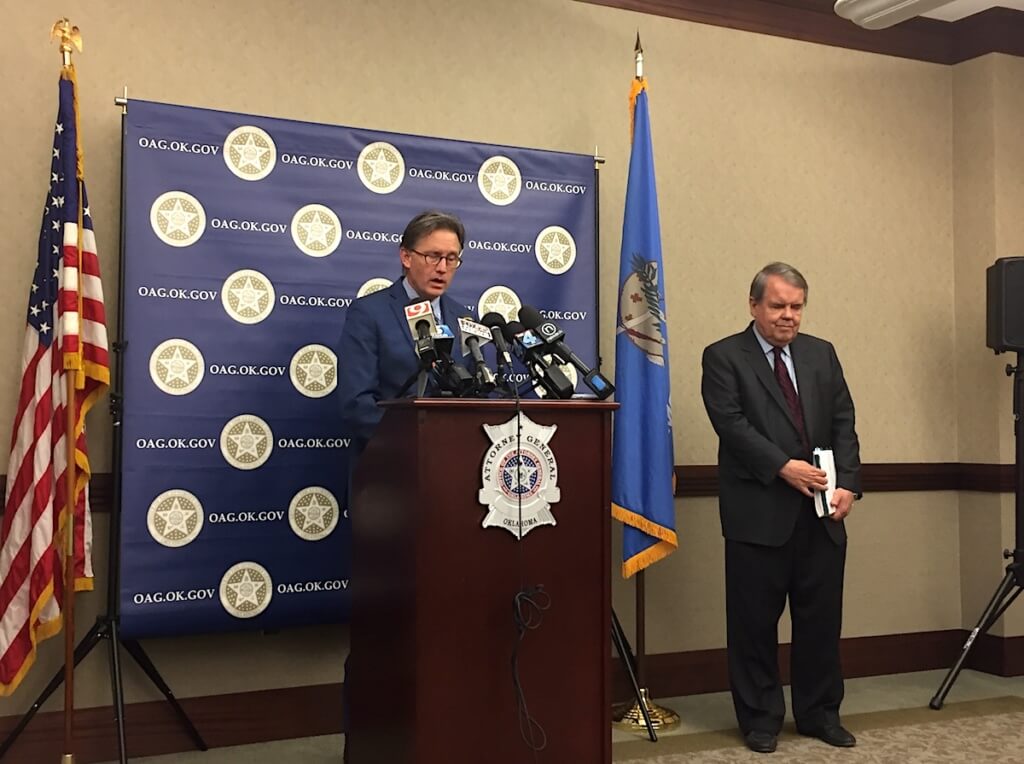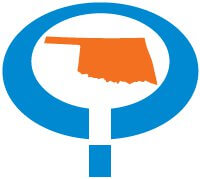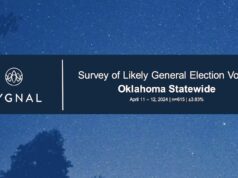(Editor’s note: This story was authored by Jeff Raymond and Mollie Bryant of Oklahoma Watch and appears here in accordance with the non-profit journalism organization’s republishing terms.)
Oklahoma is among the nation’s leaders in combating the opioid epidemic in some ways, but lags in others.
The question of what more Oklahoma can do to reduce the hundreds of fatal overdoses from prescription painkillers each year will hover over the 2018 legislative session. A commission chaired by Attorney General Mike Hunter plans to recommend by Dec. 1 new strategies for attacking the problem. Some or all of its proposals will be folded into legislation.
The latest overdose statistics show that Oklahoma has made progress in recent years in reversing opioid deaths. But health and law enforcement experts say the crisis is far from over. And even as opioid fatalities have declined, overdoses from methamphetamine and heroin are increasing.
The Bureau of Narcotics and Dangerous Drugs Control reports that in 2016, a record 899 Oklahomans died from drug overdoses — a 68 percent increase since 2007.
Yet the state has seen successes as well. The number of deaths in which opioids were involved fell by 8 percent from 2012 to 2016, to 585, the bureau’s data shows. Oklahoma’s prescriptions for controlled, dangerous drugs dropped to 9.3 million in 2016 after peaking at 10 million three years prior.
Because the opioid epidemic permeates so many aspects of public and private life, it’s unclear who bears the brunt of responsibility, even if the entire state feels its impact.
“The great plagues of our society have one thing in common … that no one owns them,” Sen. AJ Griffin, (R-Guthrie), told the state opioid commission in an Aug 29 hearing, the first of five hearings planned.
But what other changes would make a difference? And are they politically and financially achievable?
Alex Gerszewski, a spokesman for Hunter, said commission members don’t know yet what their final recommendations will be but they are “looking at what we could do better, where we’re lacking.”
Oklahoma Watch examined specific ideas that arose out of the August hearing as well as what some other states are doing to confront the issue. Mental health officials emphasize that while new approaches are important, the underlying issue remains a lack of prevention and treatment programs.
Prescription monitoring
The state was first to establish a prescription monitoring database (although access was limited to law enforcement for decades) and was the first to have real-time reporting of prescriptions as they are filled. Oklahoma has tightened opioid prescribing by requiring prescriptions for those drugs and other controlled dangerous substances to be written or filed electronically — rather than called in to pharmacies – and eliminating refills. But unlike some other states, it has no limits on initial opioid prescriptions, only a recommendation that the amount be as little as necessary.
RELATED
Painful pills: Oklahoma sues opioid producers by William W. Savage III
Whether the Legislature would toughen requirements is unclear. Doctors fought off proposals for years to require them to check the online Prescription Monitoring Program for every opioid prescription. Then, in 2015, they agreed to a compromise: Physicians must check the database for all new patients who are seeking prescriptions for certain highly addictive drugs and at least once every 180 days after that. Doctor shopping has dropped by about a third, state research shows.
Not all states require providers to check the databases when writing narcotic prescriptions. Timetables for re-checking patients differ as well. California requires providers to check every four months.
Don Vogt, who manages Oklahoma’s PMP, said prescription monitoring has had unintended consequences. Fifteen percent of the state’s physicians have stopped prescribing controlled dangerous drugs, particularly opiates, which he suggested causes patients in rural Oklahoma to seek pain management treatment elsewhere, including neighboring states. With decreased access to the prescriptions, addicts quit cold turkey, leading to withdrawal, or they transition from opioids to heroin.
One continuing gap in the system is the ability to communicate with other states. All states but Missouri have prescription monitoring systems, but Mark Woodward, spokesman for the Bureau of Narcotics, said Oklahoma’s can only communicate with those in 11 other states.
Electronic prescribing
Some states have made strides in the opioid epidemic by requiring electronic prescribing. New York, for instance, has required electronic prescriptions for all drugs since last year.
Although doctors may prescribe opioids electronically, most Oklahoma physicians tend to prescribe them on paper, said Terri White, mental health commissioner.
That allows patients or medical staff to alter prescriptions or write fraudulent ones using a prescription pad.
“Many physicians don’t know they can electronically prescribe opioids, but even if they did, many don’t have an electronic prescribing system with that section in it,” White said.
Cindy Fain, chief compliance officer for the Oklahoma State Board of Pharmacy, said the public can buy the type of paper used for prescription pads, and high-quality printing technology makes for very convincing fakes.
“They are so good that it’s nearly impossible to tell whether it’s a forgery or not without calling the doctor,” she said.
Prescription limits
In March 2016, the Centers for Disease Control and Prevention issued more restrictive opioid-prescribing guidelines for primary-care providers.
In line with those, Oklahoma limits prescriptions to no more than the amount patients need for short-term relief of acute pain, although that amount isn’t specified. Many other states have three- to 30-day limits. At least 15 states have opioid prescription limits, although some apply only to Medicaid recipients, state insurance plan participants or minors, or deal only with initial prescriptions, according to a July report from the National Governors Association.
Dr. Kevin Taubman, president of the Oklahoma State Medical Association and a Tulsa surgeon who prescribes opioids, emphasized that they are a necessary part of some patients’ care.
“You don’t want people to come in and put onerous limitations on your practice. … It’s the routine use we need to think about,” he said.
The value of naloxone
In recent years, state agencies and pharmacies have expanded the availability of naloxone, a drug that can prevent opioid overdoses. Pharmacies provide naloxone without a prescription. However, Oklahoma lacks a “Good Samaritan” law that shields individuals from prosecution or civil litigation for administering the drug.
Good Samaritan bills have been introduced four times in the Legislature but failed to make it out of committee. Forty states and Washington, D.C., have a version of this legislation.
Medicaid covers naloxone in Oklahoma, and a state program provides the drug for free to those 19 or younger or those who know a youth at risk of overdose.
A state Department of Health project trains first responders to use naloxone, and, using federal money, the Oklahoma Department of Mental Health and Substance Abuse Services provides the opioid reverser to every law enforcement officer in the Tulsa area and in Oklahoma City. The mental health department has trained 70 law enforcement agencies across the state, mostly in rural areas, according to department data.
“This is a place where we have excelled and one of the biggest factors in driving down overdose deaths,” said Terri White, mental health commissioner.
Jeff Locke, director of homeland security and public safety for the National Governors Association, said law enforcement officials are enthusiastic about naloxone but worry about having enough of the drug.
Anti-addiction strips
Limits also exist for a drug used to reduce dependence on opioids: Suboxone, the brand name for a medication, applied via film, or strips, that combines buprenorphine and naloxone.
Physicians need a waiver from the Drug Enforcement Administration to prescribe buprenorphine — the primary active ingredient — and in the first year they can treat no more than 30 patients. The DEA recently raised that limit to 250 patients in the second year, but availability remains limited.
“It’s particularly difficult in Oklahoma, where we have so few providers,” especially in rural areas, White said.
Oklahoma ranks near the bottom of states in the percentage of people with an opioid addiction for whom buprenorphine is available, according to a 2016 review by The Pew Charitable Trusts. In 28 states, the drug is available to fewer than half the people who might benefit from it.
Educating doctors on the opioid epidemic
The Oklahoma State Medical Association and Oklahoma Medical Board have discussed adding continuing education courses on addiction medicine and pain treatment, said Lyle Kersey, executive director of the board. Although addiction medicine is not part of M.D.s’ required 60 hours of continuing medical education every three years, seminars in these areas have been regularly available, he said.
Osteopathic doctors must take 16 hours of continuing medical education a year, of which one hour every other year must be devoted to opioids and other controlled dangerous substances.
Alabama requires two hours of controlled substance prescribing education every two years. Iowa requires continuing education in opioid prescribing for pain-management doctors and those who specialize in end-of-life care. New York requires prescribers of controlled substances to complete three hours of course work every three years in pain management, palliative care and addiction.
Physicians spend “innumerable hours” learning how opioids and other medications work and how to prescribe them appropriately, said Taubman, of the medical association. Yet “even with all those years of education … we still have a lot of learning to do.”
In general, Taubman said, physicians are open to ways to reduce opioid prescribing, provided they don’t interfere with the doctor-patient relationship.
“At the end of the day, I’m not sure where those borders are until we see the suggestions come forward,” he said.
























